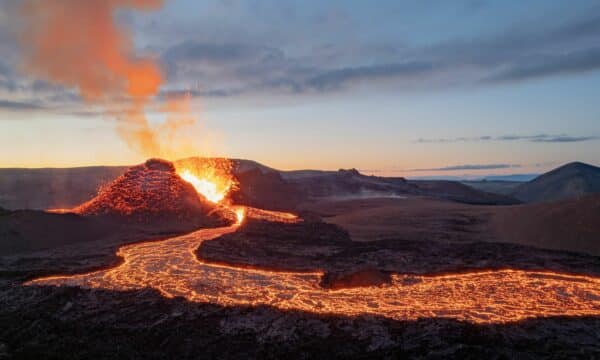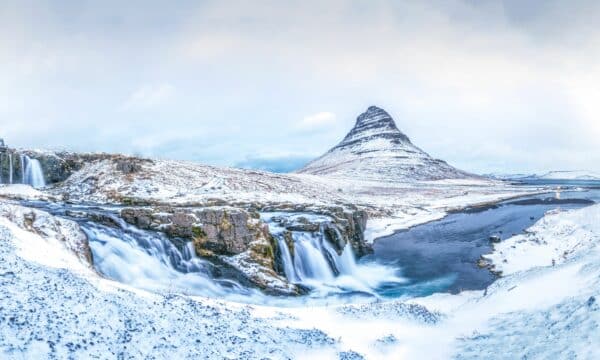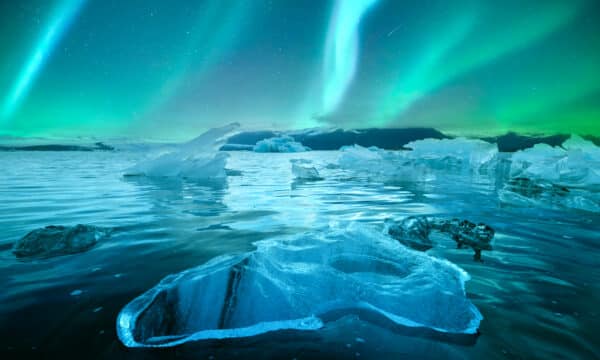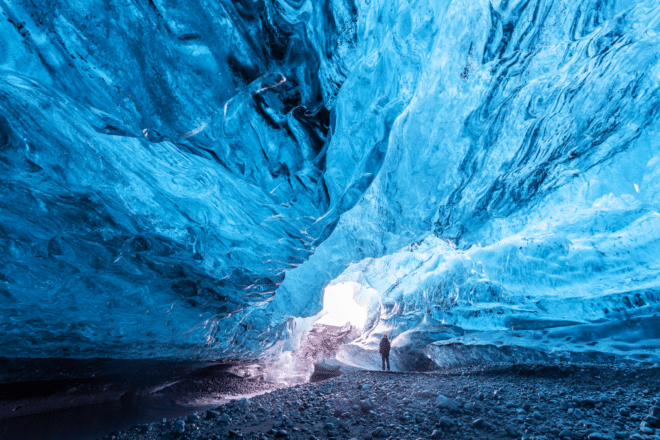
The Icelandic ice caves are some of the world’s most awe-inspiring natural wonders. You can find these frozen monuments to nature’s power and beauty on the outlet glaciers of Iceland’s many ice caps
Over 11% of the Icelandic landmass is covered by massive sheets of ice known as glaciers, leaving no doubt as to why the country bears its name. These glaciers are so enormous that they cover mountains, valleys, and, often, active volcanoes, like a white sheet of bed linen.
This interplay of hot and cold—glaciers and volcanoes—allows the formation of beautiful ice caves. Visiting any of these magical glacial grottoes often tops many visitors’ bucket lists.
With day trips, super jeep tours, and experienced guides all available for hire, it has never been easier to explore Iceland’s stunning ice caves.
The Science Behind the Ice Caves: How They Form and What Makes Them Unique

The Icelandic ice caves are some of the world’s most awe-inspiring natural wonders. You can find these frozen monuments to nature’s power and beauty on the outlet glaciers of Iceland’s many ice caps.
The majority of Iceland’s glaciers started forming approximately 2500 years ago. Over the centuries, pools of water concentrated and condensed to form glaciers which cover many of this country’s mountains and volcanoes.
These enormous ice bodies are consistently on the move. They are sculpted by surrounding mountainsides or the pressure of their own weight. Other factors, including the speed of their motion, can cause the glaciers to twist and turn in peculiar ways. This movement often leaves open crevasses, which, when filled with meltwater, create deep vertical shafts known as moulins.
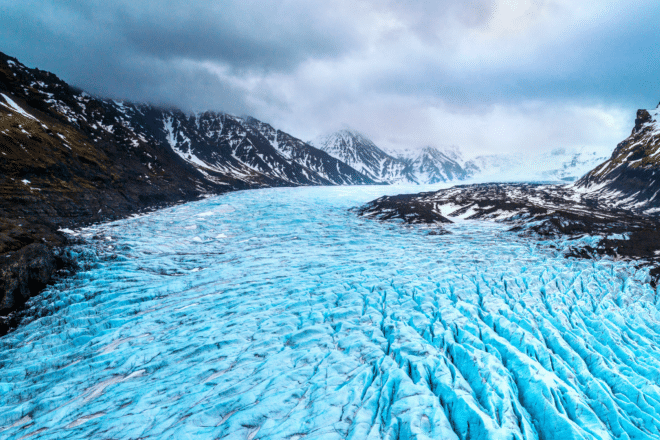
Iceland is a country with high volcanic and geothermal activity. The glaciers covering volcanoes have volcanic vents or hot springs emitting heat, which creates more meltwater. When the water pours down the glacier moulins, it digs tunnels in the ice.
These tunnels are commonly known as ‘ice caves’. However, the correct term is actually ‘glacier cave’. In geology, ‘ice caves’ is the proper term to describe rock caves containing year-round ice, such as Víðgelmir cave in West Iceland. But we will continue to use the more common ‘ice caves’ term here.
Discovering the Best Locations of Icelandic Ice Caves: From Reykjavik to Vatnajökull

Most visitors to Iceland arrive at Keflavík International Airport before making the short drive to Reykjavík. Both the airport and the capital are located in the western part of the country. However, the most popular ice caves—known as The Blue Ice Caves—are inside Vatnajökull Glacier, found in Southeast Iceland.
Travelling to these caves can take up to two days. However, the journey is very scenic, with plenty of photography stops along the way. Those with more limited time in the country can either visit the Katla Ice Cave, located on the south coast, the natural cave on Langjökull, or one of the man-made caves that are closer to the capital.
The Blue Ice Caves in Vatnajökull Glacier
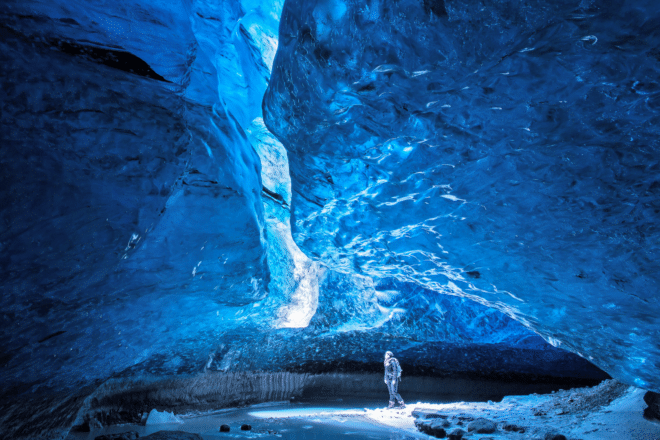
The most famous ice caves are found within Vatnajökull National Park. They are in southeast Iceland, around 380 km (49.7 mi) from Reykjavík. Unfortunately, Vatnajökull’s ice caves are only accessible during the winter months. That is because summer sees these subterranean tunnels flood with glacial water, thus becoming inaccessible. Therefore, visiting Vatnajökull ice caves is only possible from August to April each year.
Vatnajökull Glacier
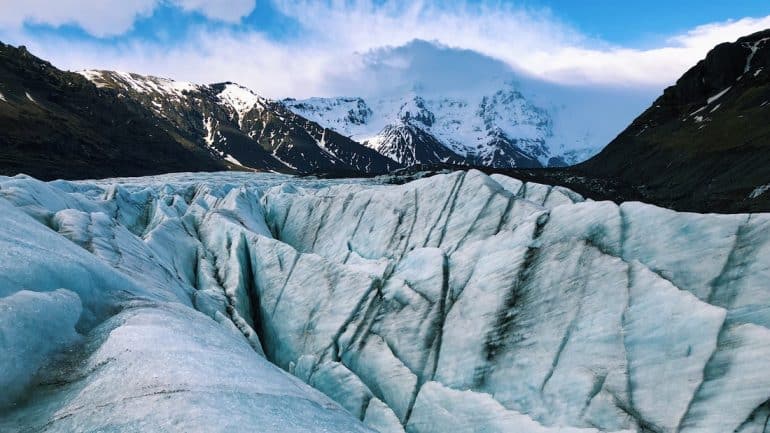
The national park is named after its star attraction, the mighty Vatnajökull ice cap (meaning “Water Glacier”), which covers an incredible 8% of the country’s landmass (8,500 square kilometres). Vatnajökull’s size not only makes it Iceland’s largest glacier but also Europe’s.
Vatnajökull has about 30 outlet glaciers, or glacier tongues, flowing from the ice cap. Although you can probably find an ice cave in most of them, many are inaccessible. Among the most popular outlet glaciers for ice cave excursions are Svínafellsjökull, Eyjabakkajökull, Falljökull, and Skaftafellsjökull.

Collectively called “The Blue Ice Caves”, these glittering caves twist and turn elegantly inside the glacier, creating a stunning scene one must see to believe. These caves sometimes go by different names depending on the tour operator, such as “Crystal Cave”, “Blue Diamond Cave”, “Waterfall Cave”, “Sapphire Ice Cave”, and even “Northern Lights Cave”.
In essence, the names are merely a marketing trick. Because the caves flood —and sometimes collapse—each season, this year’s Crystal Ice Cave might be completely different from last year’s Crystal Cave.
From Where do Blue Ice Cave Tours Depart?
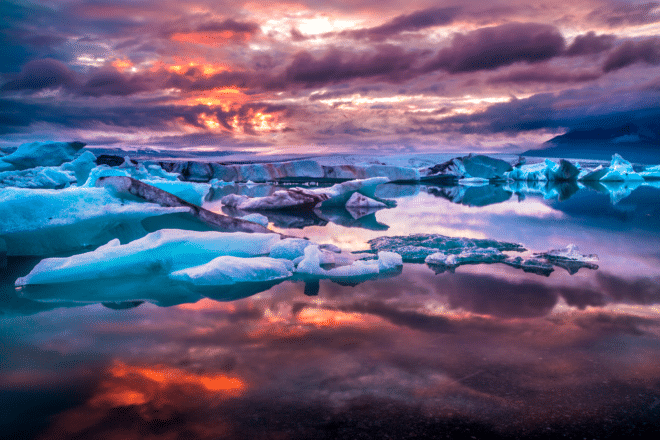
The distance between Reykjavík and Vatnajökull, paired with winter driving conditions, make visiting these ice caves from the capital a two-day journey. However, staying overnight at a country hotel gives guests more time to enjoy the many attractions found along the way.
Guided multi-day tours to ice caves depart from Reykjavík city and include sightseeing stops along the South Coast. These often include the sites on the Golden Circle, Reynisfjara Black Sand Beach, Jökulsárlón Glacier Lagoon, and the Diamond Beach.

Stand-alone day trips—perfect for self-drive tours—usually depart at Jökulsárlón Glacier Lagoon, but sometimes at Skaftafell Nature Reserve.
Most tours require a short glacier hike through beautiful frosty landscapes to reach the cave. However, adventure-seekers looking to avoid crowds can book a longer ice cave tour where they’ll have to hike for about 1.5 hours each way.
Katla Ice Cave in South Iceland
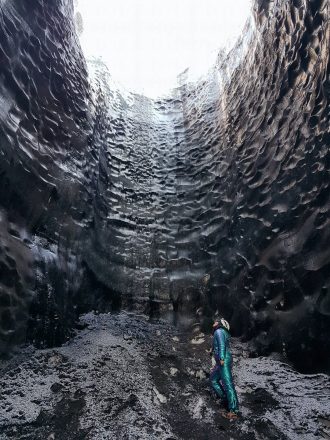
Closer to Reykjavík is the Katla Ice Cave in Mýrdalsjökull Glacier, which is about 167 km (42 mi) west of the capital. The cave itself is named after Katla Volcano, on which the ice sits.
Unlike other natural ice caves, the Katla Cave is available to visit all year round. This makes it a must-see for summer travellers who thought they might otherwise miss their chance to visit one of these true natural wonders.
Aside from the Katla Ice Caves being accessible year-round, the main difference between the Katla Ice Cave and the Blue Ice Caves in Vatnajökull is the colour of the ice. Although you can find blue ice at Katla, the cave is much darker. The ice is also streaked with black ash from past volcanic eruptions.
From Where do Katla Ice Cave Tours Depart?
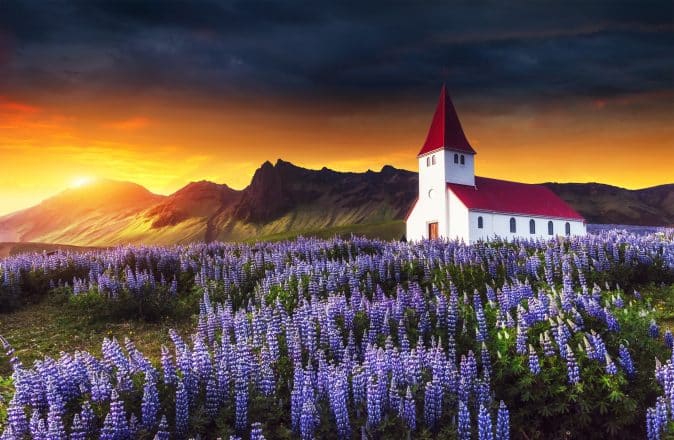
Most tours which visit the Katla Ice Cave will depart from either Reykjavík or the seafront village, Vík í Mýrdal. The excursions from the capital will often include sightseeing stops at the Seljalandsfoss and Skógafoss waterfalls and the black sand beach, Reynisfjara.
There are usually two departure times for the Katla Ice Cave from Vík. The morning departure is perfect for those on a self-drive tour and overnighting near the town. In contrast, the afternoon departure is more suited for those starting the day further away, such as Reykjavík or Kirkjubæjarklaustur.
Langjökull Glacier’s Ice Caves
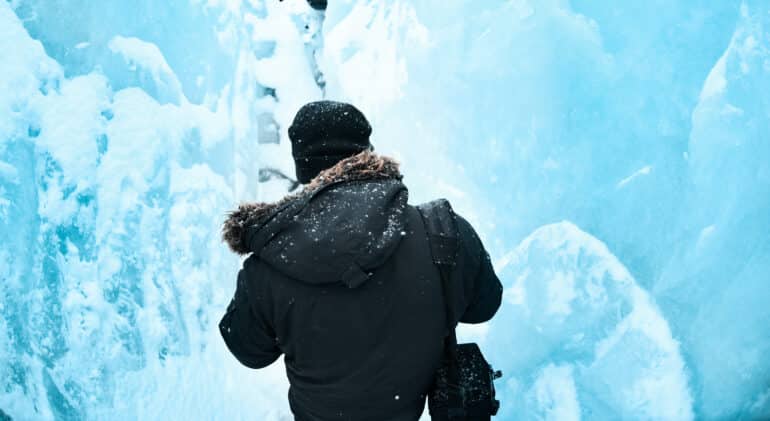
The closest ice caves to Reykjavík are the ones found at Langjökull, the second-largest glacier in the country. This massive glacier in the Icelandic highlands has a natural ice cave open to visitors between October and January. Additionally, there are man-made ice tunnels that allow visitors to explore the glacier’s interior in a unique and exciting way.
Unlike most natural ice caves, the tunnels at Langjökull Glacier can be visited all year round. This is because the man-made tunnels remain stable and more constant in temperature than their natural counterparts.
For both the ice tunnels and natural cave, visitors must ride in a massive glacier truck to reach the attractions. This only adds to the drama and exhilaration of visiting.
From Where do Langjökull Ice Cave Tours Depart?
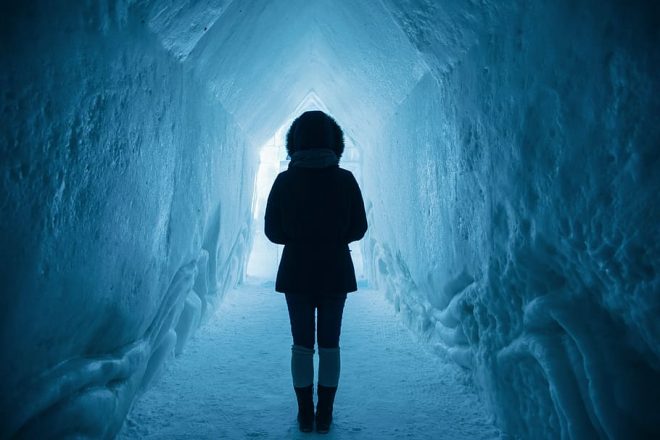
For those interested in visiting the ice tunnels on Langjökull, there are two main departure points. The first option is from Reykjavík city, which includes sightseeing stops along the way. The other option is from Húsafell, located close to the glacier itself.
For tours to the natural ice cave, a guide will pick up visitors at Gullfoss Waterfall on the Golden Circle route.
Perlan Ice Cave (Wonders of Iceland Exhibition) in Reykjavik
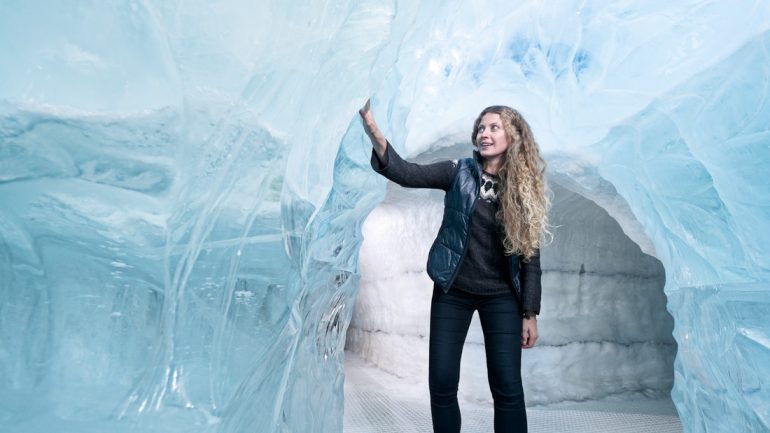
Visitors to Reykjavík will likely spot the strange dome landmark that overlooks the city skyline. This is the iconic Perlan Museum and Observation deck, situated on Öskjuhlíð Hill. This proud institution has a great reputation for offering guests fascinating insights into the island’s nature and wildlife.
While also host to a Northern Lights planetarium and a full-scale reproduction of an Icelandic sea cliff (complete with nesting puffins), it is Perlan’s artificial ice cave that draws the most attention.
Inside this magnificent 100-metre-long reconstruction, you will learn about Iceland’s glacial environments in a fun, informative and interactive way. The attraction was built using an incredible 350 tonnes of pure Icelandic snow.
Lofthellir Ice Cave in North Iceland
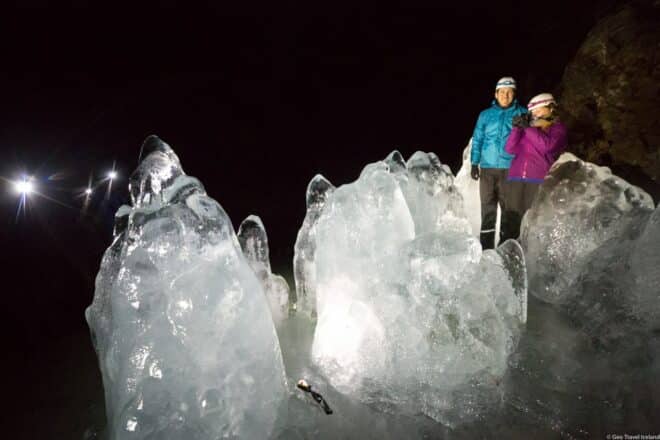
From Lake Mývatn, you can take a guided tour of the always-staggering Lofthellir cave. Note that Lofthellir is an “ice cave” in the scientific meaning of the word and not a “glacier cave” like the others mentioned above (remember, we talked about the difference earlier).
This ethereal cavern is famous for its fantastic, naturally-formed ice sculptures and stalactites. Lofthellir formed over 3500 years ago and extends an incredible 370 meters (1213 ft) underneath the Laxardalshraun lava field.
Planning Your Icelandic Ice Cave Adventure: Best Times to Go and What to Bring

If you’re planning an Icelandic ice cave adventure, there are a few things you’ll need to consider before you go. Here’s what you should know about the best times to visit and what to bring:
When is the Best Times to Go?
There is no official “ice cave season” in Iceland, given that you can visit ice caves throughout the year.
However, the best time to visit most of the island’s ice caves is during winter months, when ice caves freeze and reform after the summer flooding. For example, the Blue Ice Caves in Vatnajökull National Park are open between August and April, while the Katla Ice Caves are available year-round.
Can you visit on your own?
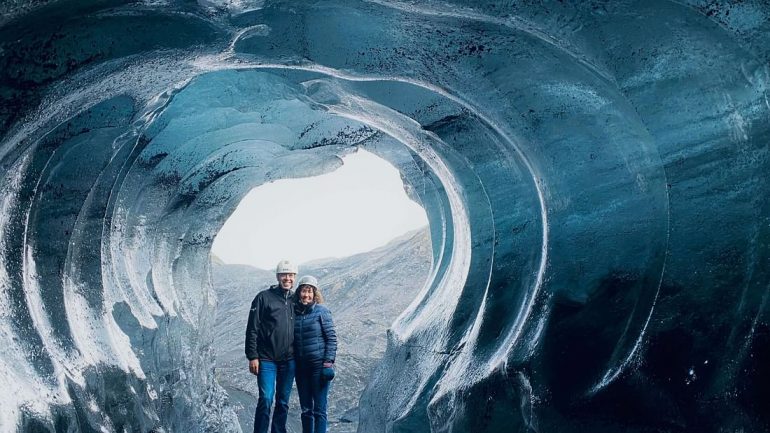
As with all nature-based activities, ice caving poses several inherent risks, making it essential that travellers only venture inside in the company of a professional, certified guide. Thankfully, all ice-caving tours sold in Iceland include a guide, ensuring your trip is safe from the get-go.
Guides will provide you with the safety equipment necessary to make ice caving possible. This can include a headlamp, crampons, walking poles and a helmet. They will also bring a wealth of knowledge and experience to ensure the activity remains fun and accessible for all experience levels.
Ice cave operators are vigilant in checking weather forecasts. They will likely reschedule your tour for another day if conditions are too rainy or blizzardous. It is always crucial that guests keep an eye on weather conditions also, as the country’s unpredictable climate will often mean having to reassess your itinerary and travel times.
What to Bring:
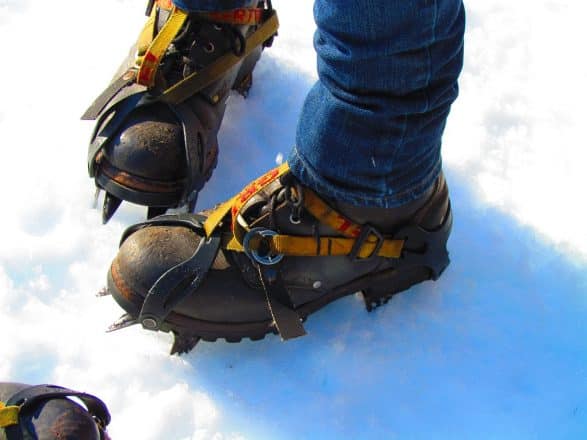
When you’re exploring an Icelandic ice cave, it’s important to dress warmly and bring appropriate gear. Your glacier guide will give you some proper safety gear, such as crampons, headlamps, and helmets. But there are a few things you’ll want to include in your packing list:
- Warm, waterproof clothing: Dress in layers, including a waterproof outer layer, to stay warm and dry in the cold Icelandic climate.
- Sturdy hiking boots: Bring waterproof boots with high ankle support. That way, the crampons your guide will provide can fit nicely, and you can navigate the icy terrain.
- Camera: You’ll want to capture the stunning beauty of the ice caves on camera. So don’t forget to bring a good quality camera and extra batteries or charging equipment.
- Snacks and water: Bring some snacks and water to stay nourished and hydrated during your adventure.
With these tips in mind, you’ll be well-prepared for an unforgettable Icelandic ice cave adventure. Just remember to always prioritize safety and respect the natural environment as you explore this incredible natural wonder.
Entering the Ice Caves: A Journey Through Frozen Wonderland
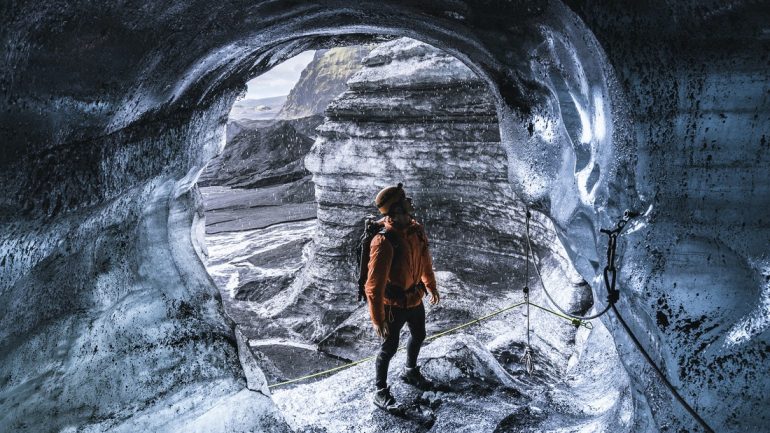
As you enter the Icelandic ice caves, you’ll step into a world of enchanting beauty and wonder. The caves are formed from melting glaciers, creating intricate and unique structures of ice that are constantly evolving.
As you journey through the frozen wonderland, you’ll be surrounded by shades of blue, white, and grey, as well as the sound of dripping water and the occasional crack of ice. As you make your way deeper into the cave, you’ll feel the crunch of snow and ice beneath your feet, and the cold air will fill your lungs.
The ice cave walls are carved with natural patterns and ice formations that are unlike anything else you’ve seen. Some caves have tall ice pillars that reach towards the ceiling, while others have smooth, curved walls that reflect the light mesmerisingly.
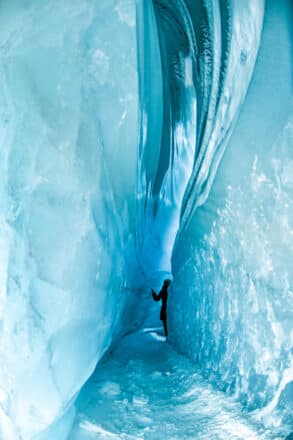
As you continue your journey, you may come across ice sculptures or even small pools of water that have frozen over. These small details add to the magic of the ice cave and make it a truly unforgettable experience.
It’s important to remember that exploring ice caves can be dangerous, and taking the necessary precautions to ensure your safety is crucial. Always travel with a guide who is experienced in navigating the ice caves, and be sure to wear appropriate clothing and gear to stay warm and dry.
With proper preparation and a sense of adventure, entering an Icelandic ice cave can be a once-in-a-lifetime experience you’ll always remember.
Awe-Inspiring Views: Capturing the Beauty of Icelandic Ice Caves Through Photography
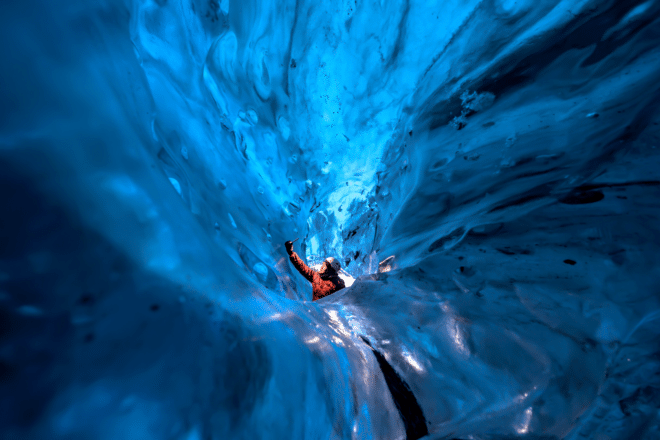
Icelandic ice caves are one of the most breathtaking natural wonders on the planet, offering unparalleled opportunities for stunning photography. The unique blue tones of the ice, the play of light and shadow, and the intricate textures of the cave walls create a visual feast for the eyes.
If you’re interested in capturing the beauty of the Icelandic ice caves through photography, there are a few things to keep in mind. First and foremost, it’s important to respect the environment and follow any guidelines your guide provides. The caves are delicate and can be damaged by careless handling or equipment.
When it comes to equipment, a good DSLR camera and a wide-angle lens are essential for capturing the grandeur of the ice caves. A tripod is also recommended to help steady your shots and create a sharp focus.
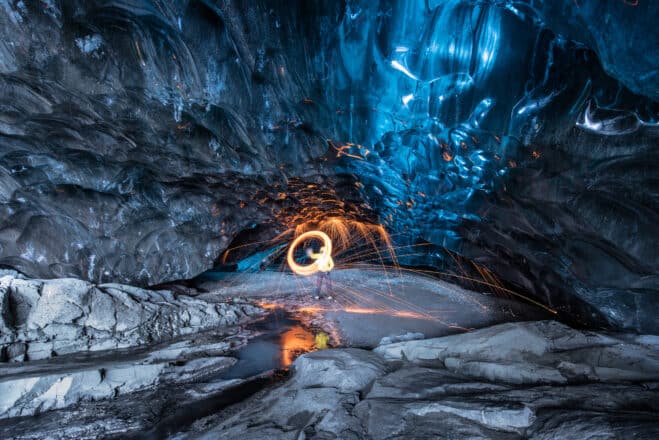
Lighting can be challenging in the caves, as they are often dimly lit, and the ice can reflect and scatter light in unpredictable ways. Experiment with different exposures and shutter speeds to find the right balance and bring out the best in the ice cave’s beauty.
One of the most rewarding aspects of photographing Icelandic ice caves is the opportunity to capture unique compositions and perspectives. Look for interesting shapes, lines, and patterns in the ice, and experiment with different angles and depths of field to create a sense of depth and scale.
With patience, preparation, and a keen eye for detail, you can create awe-inspiring images of Icelandic ice caves that will capture the beauty of this natural wonder for years to come.
In summary

We’ve come to the end of our Icelandic ice cave odyssey, but let’s remind ourselves of the essential points we’ve learned.
Most importantly, and to the joy of man, you can visit Icelandic ice caves year-round. However, that is not to say that you can see ALL ice caves year-round, only specific sites.
For instance, people can only visit the famous “Blue Ice Caves” in Vatnajökull Glacier between August and April, and the natural Langjökull Cave between October and January. But, summer visitors can enjoy the natural Katla Ice Caves and the man-made Ice Cave Tunnels and Perlan Ice Cave.
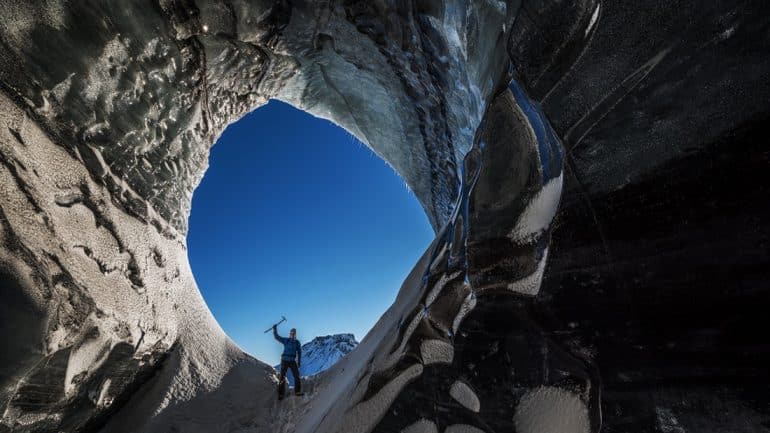
At the beginning of each season, trained glacier guides inspect Iceland’s ice caves to determine whether they are safe to enter. Travellers should never attempt to enter an ice cave on their own.
Regarding equipment, remember that glacier guides will provide you with all the necessary gear, including crampons, a helmet, and even your very own ice axe. But you should wear warm and waterproof clothes on your tour and good hiking boots.
And please—for the love of God; remember your camera! Given the breadth of natural beauty on display beneath Iceland’s glaciers, you’ll be sure to want to capture the experience forever on film.

